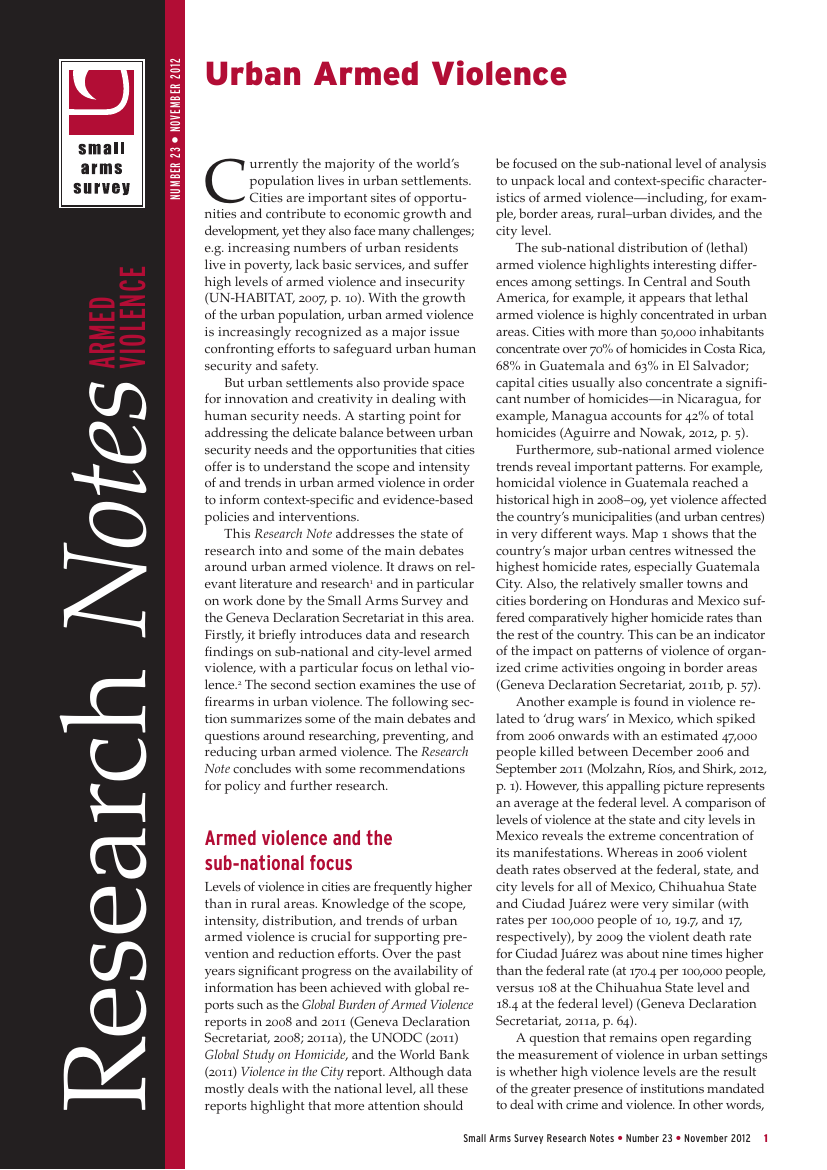
Urban Armed Violence (Research Note 23)
With the majority of the world’s population now living in cities, and with levels of violence very often higher in urban than rural areas, urban armed violence has become increasingly critical to securing human security and safety.
Urban Armed Violence, a Research Note by the Small Arms Survey and the Geneva Declaration on Armed Violence and Development, surveys the state of research into urban armed violence, and explores some of the main debates on this subject.
Urban Armed Violence briefly introduces the research findings on sub-national and city-level armed violence, with a particular focus on lethal violence and the use of firearms. The Research Note concludes with a set of recommendations for further research and policy development.
Key findings include (2012):
- Cities with more than 500,000 inhabitants account for over 70% of homicides in Costa Rica, 68% in Guatemala, and 63% in El Salvador.
- Crimes may be more likely to be reported in urban areas, skewing the statistics. In a study in Kenya, for example, urban inhabitants were more likely to report crimes than their rural counterparts.
- In many countries, urban areas have a higher rate of violence using firearms. Fifty metropolitan areas surveyed in a recent US study, representing 54% of the national population, accounted for 67% of firearms homicides.
- While the size of cities does not appear to have a direct correlation with violent crime rates, a high rate of urbanization often correlates with greater violence.
- Other factors that can exacerbate urban armed violence include: rates of unemployment; high proportions of youth; low levels of education; poor urban design; proliferation of firearms; and high density of informal settlements.
Have your say about Small Arms Survey publications and products: take 5 minutes to fill out our questionnaire.